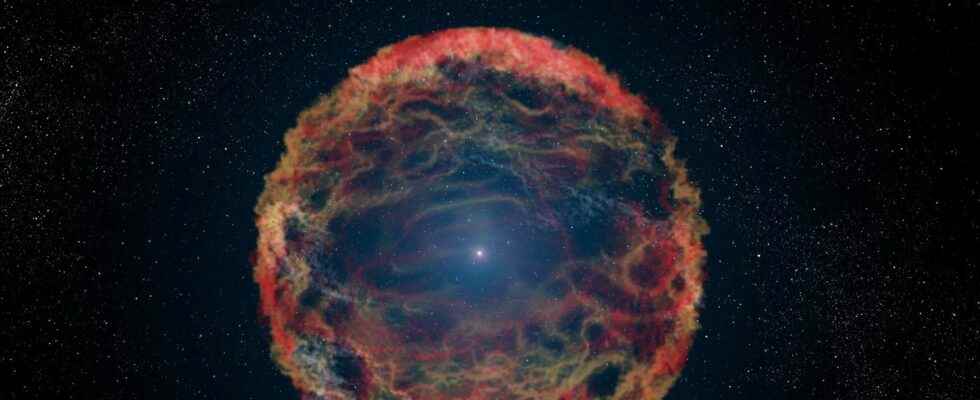You will also be interested
[EN VIDÉO] Binary systems of stars and black holes Assembly made by NASA of 22 binary systems comprising a star and a stellar-mass black hole. Their dances are accelerated 22,000 times and shown as seen from Earth. The colors of stars and accretion disks that surround black holes reflect their temperatures. © Nasa
In 2017, researchers from the University of Canterbury in New Zealand discovered a quadruple system ofstars, since dubbed HD74438. More precisely, it is a double star system binaries : a first with a orbit close and fast, and the other much more distant and slow. In a new journal publication Nature Astronomyfrom astrophysicists study the possible evolutions of this system, based on modeling of the orbit of each star it contains.
The youngest quadruple system ever found
Located in the constellation of Vela visible only in thesouthern hemisphereHD74438 was discovered during an observation campaign by the ESA Gaia satellitewhich has already identified more than 100,000 stars in our Galaxy. Then, everything was done thanks to spectrographs at high resolution located at the University of Canterbury in New Zealand and the Southern African Large Telescope in South Africa. They make it possible to characterize the light spectrum of the stari.e. to decompose the light it emits and to analyze the intensity for each wave length. Thanks to this method they can deduce not only the temperature of the star, but also the composition of its atmosphere.
#Space: spot astronomers #QuadrupleStars (actually “double-binary” star system HD74438) that may spark #supernova explosions
???? https://t.co/NDFbOyo16p via @phsyorg_com pic.twitter.com/p3VsAbvw1w— Maxime Duprez (@maximaxoo) May 16, 2022
This star system 43 million years old is still young, because if that seems long, let’s remember that our Sun It’s already 4.6 billion years old! This makes it the youngest quadruple system ever found to date. These four-star systems are rare, on the order of a few percent of multiple systems which are already quite rare, and have complex evolutions. In this specific case, the binary system external exerts a gravitational attraction on the internal system, and tends to deform the orbits of its two stars.
A future thermonuclear supernova?
In order to model the possible evolutions of HD74438, the team of scientists modeled the gravitational effects that govern the quadruple system. They thus showed that theeccentricity of the internal system tended to increase. In practice, this means that the trajectory will evolve to be less and less circular: a collision could be triggered following this deviation, between a star of each system.
And from this collision would result… first of all a white dwarf ! It’s not there yet thermonuclear supernova long awaited. “ A star like our sun will end its life as a small, dense dead star known as a white dwarf, and the mass white dwarfs cannot exceed the so-called Chandrasekhar limit (about 1.4 times the mass of the Sun)”explains Professor Karen Pollard, first author of the study and astrophysicist at the University of Canterbury. “If so, due to mass transfer events or merger, it can collapse and produce a thermonuclear supernova. » And that is precisely what would happen for HD74438!
“The evolution of stellar quads such as HD 744384 therefore represents a promising new pathway for forming thermonuclear supernova explosions in theUniverse, she concludes. FInterestingly, 70% to 85% of all supernova thermonuclear cells are now suspected to result from the explosion of white dwarfs with sub-Chandrasekhar masses. As a result of mass transfer or mergers, these dwarf stars white can explode in a thermonuclear supernova. » What question the current models of thermonuclear supernovae.
Right now, receive the Mag Futura for free by subscribing to our subscriptions!
Did you know that you can access Futura without ads via our subscriptions?
At the moment, you can discover this advantage with our special offer: subscribe to the “I participate in the life of Futura” (for a minimum of 3 months) and receive the Mag Futura at home* (worth €19)!
*Mag Futura is sent after the third month of registration.
Interested in what you just read?

